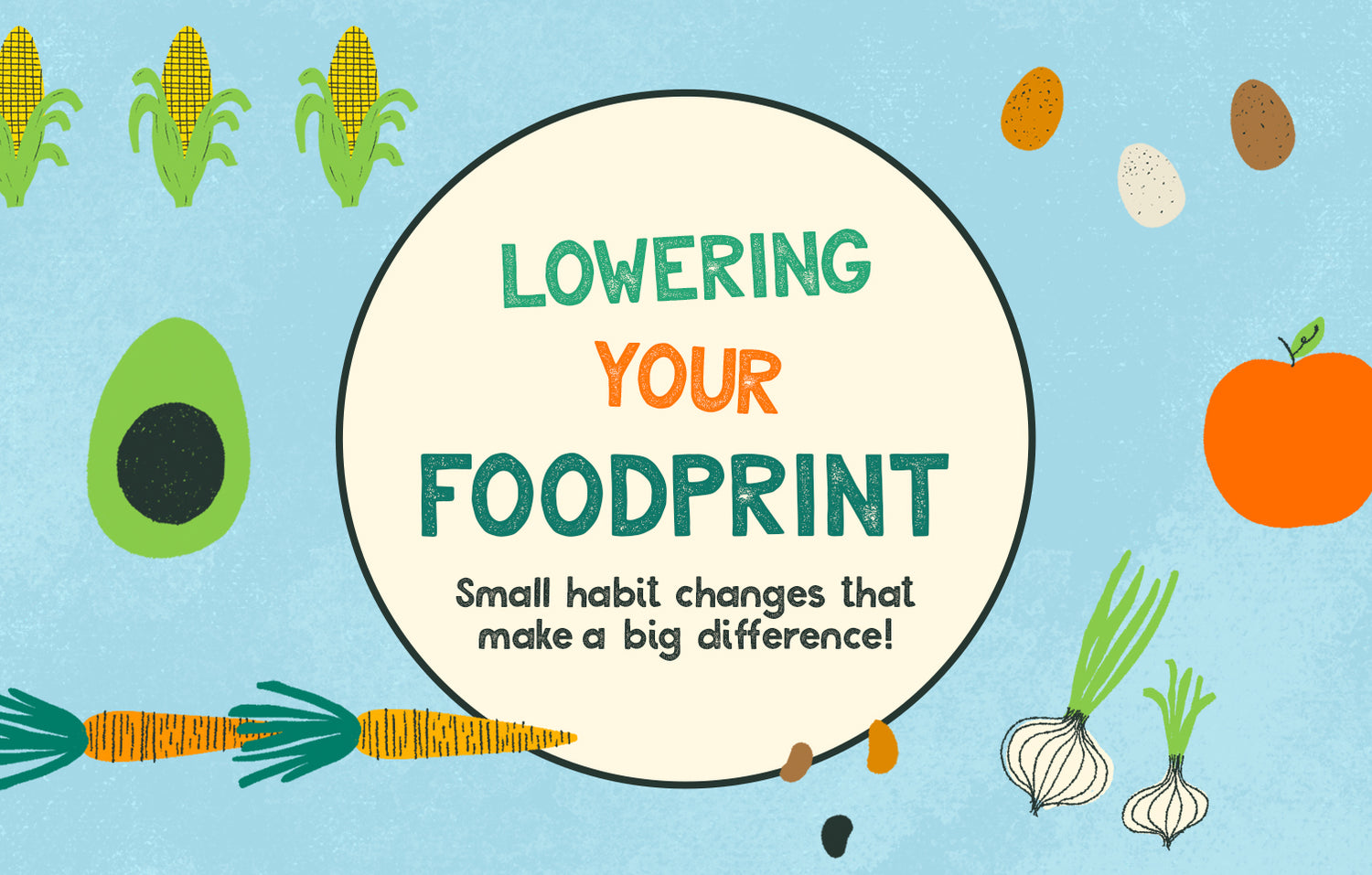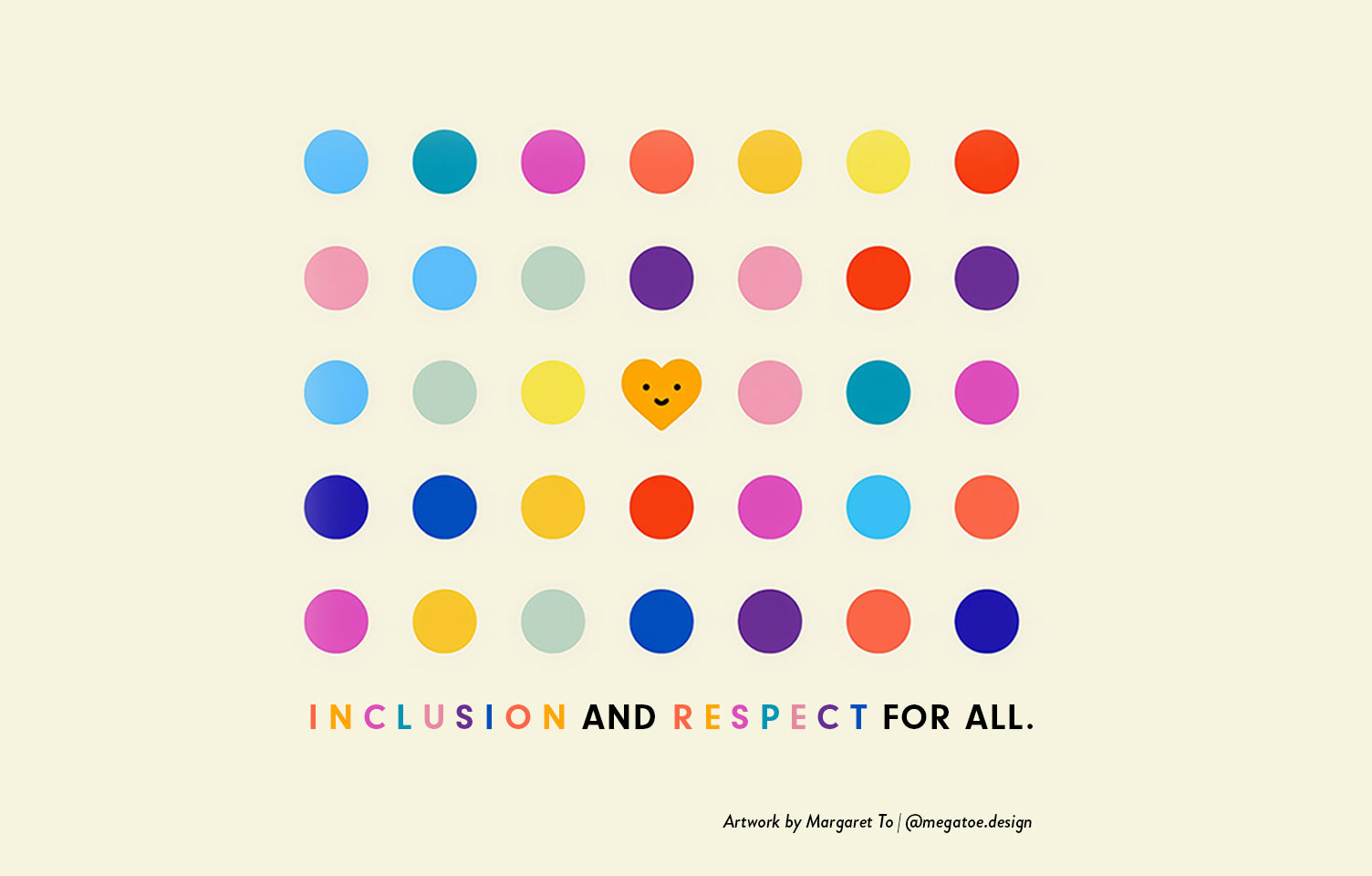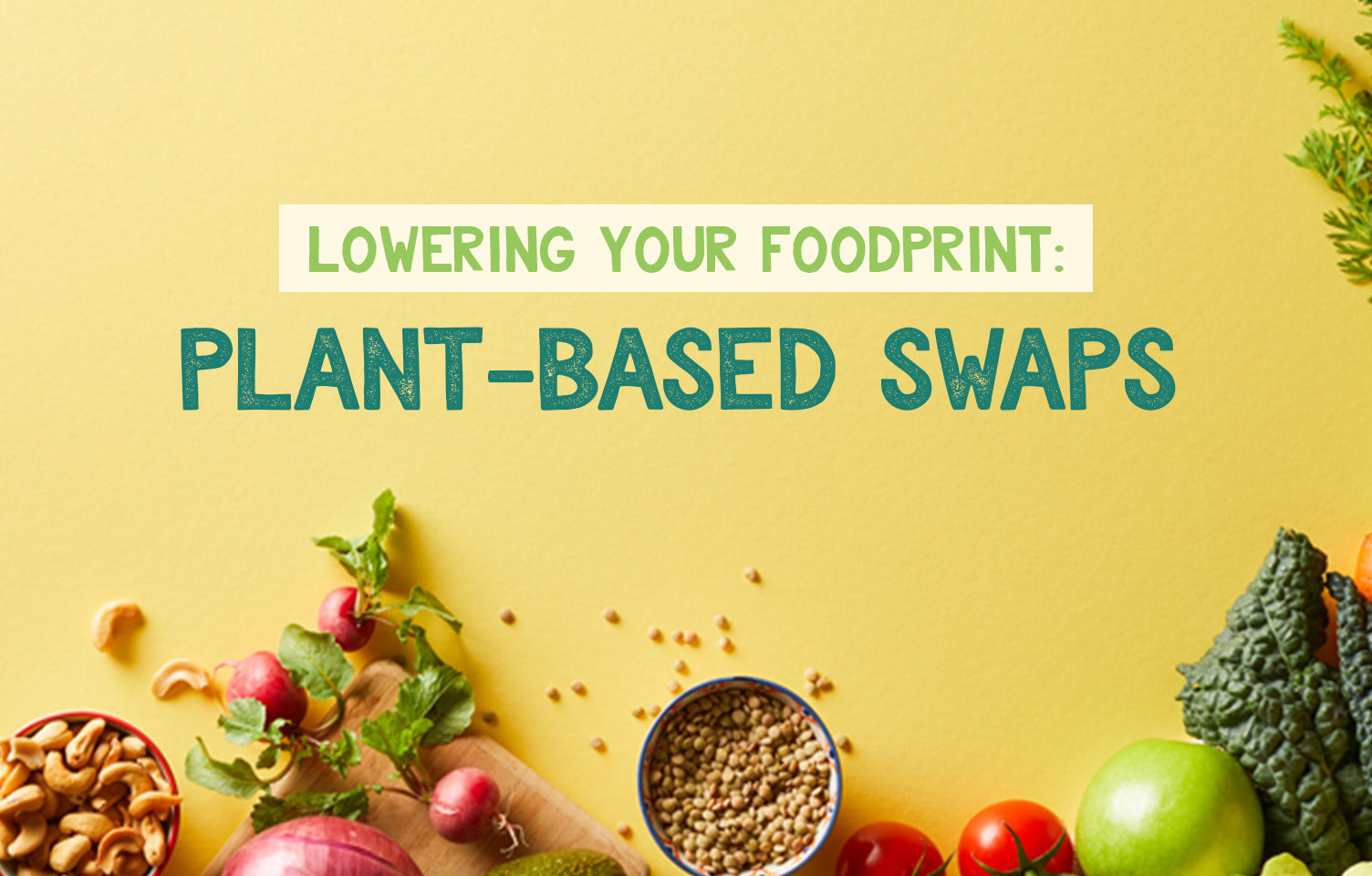Your foodprint is the hidden by-product from the food you eat. Your daily habits around food- food choices, where you buy your food, how it was produced, and even how much waste you produce and what you do with it- all have an impact on our environment, animals, and people.
The food system, which includes production, packaging, transportation and disposal of everything we eat, accounts for one third of global greenhouse gas emissions. Everything you eat leaves behind a print, some more harmful than others.
Our industrial food system is not sustainable for the long term and our planet won't be able to feed the world’s population by the year 2050. If we don’t collectively take action and make conscious choices to slow down its adverse effects, our meals will look very different in only 30 years time.
Animal Agriculture
Animal agriculture takes a huge toll on our soil, water, and air. Two thirds of available agricultural land worldwide is eradicated for animal production. As soil is exposed, carbon is released. Not only is deforestation a carbon source, it affects local water cycles changes and causes ecosystem disruptions. An exponential amount of water is needed to process livestock into food. To produce one pound of beef alone, a whopping 1,800 gallons of water is needed. Estimated to account for up to 80% of greenhouse gas emission, livestock is the largest contributor of methane emissions and is 20 times more harmful than carbon dioxide. Additionally, industrial meat and dairy production require significant quantities of animal feed, which is grown with synthetic fertilizers- a culprit for both carbon and nitrous oxide emissions.
Crops
As a result of greenhouse gases in the atmosphere, temperatures are rising and precipitation patterns are changing, putting crop production at a direct risk. The nutritional quality of crops are also at the mercy of high carbon dioxide levels.
As our populations increase, the use of synthetic fertilizers increases too. These fertilizers are often used in excess, leach into groundwater, and create a dead zone in lakes and rivers where no plant or animal life can survive.
The use of pesticides has led to the growth of herbicide resistant weeds, causing a chain reaction of resource depletion for farmers. As the climate changes, water will become less available, and crop yield and food security is at risk.
Food Waste
The food you don’t eat is also important. Leftovers end up in landfills where they release harmful greenhouse gases into the atmosphere. Instead of tossing your uneaten food into the garbage, composting generates significantly less methane.
According to the US Department of Agriculture, food waste is estimated at between 30-40% of the food supply. This large percentage equates to a rapid toll on climate change.
Calculate your foodprint
Your foodprint is measured by looking at your habits and how they relate back to the food cycle- from the natural resources used to the pollution and greenhouse gases produced. Food that is grown and produced closer to you will have a lower foodprint than food that is grown elsewhere and transported.
You can calculate your foodprint at Earthday.org here.
5 ways to shrink your foodprint
- Eat lower on the food chain. Choose more plant based foods and limit meat intake. Start small and commit to going meatless just one day per week.
- Choose local, organic, and seasonal when possible. This protects local land, decreases food miles, and is produced with less synthetic fertilizers
-
If you’re eating meat, choose better meats. Grass-fed cows improve land use and and soil health (aka less carbon emissions). Avoiding antibiotic treated livestock reduces its runoff into our waterways and contaminating groundwater and ultimately farms in the form of recycled fertilizer. Read labels carefully and look for things like:
- USDA organic
- 100% grass-fed
- pasture-rasied
- no antibiotics
- Eat whole foods instead of processed foods. Processed food is packaged food and packaged food means more plastic waste and a bigger strain on our environment. Use reusable bags to purchase your whole foods.
- Reduce your food waste. The best way to reduce food waste is simple: eat the food you buy! Get creative in the kitchen to use up all the food you buy.
Educate your kids
Together, let’s raise environmental stewards of the planet. By teaching kids that food has an impact on both their own health and the world around them, they can help mold a more sustainable food system for the future.
In our next blog post, we'll be sharing easy food swaps to lower your foodprint.
References:




Leave a comment
This site is protected by hCaptcha and the hCaptcha Privacy Policy and Terms of Service apply.